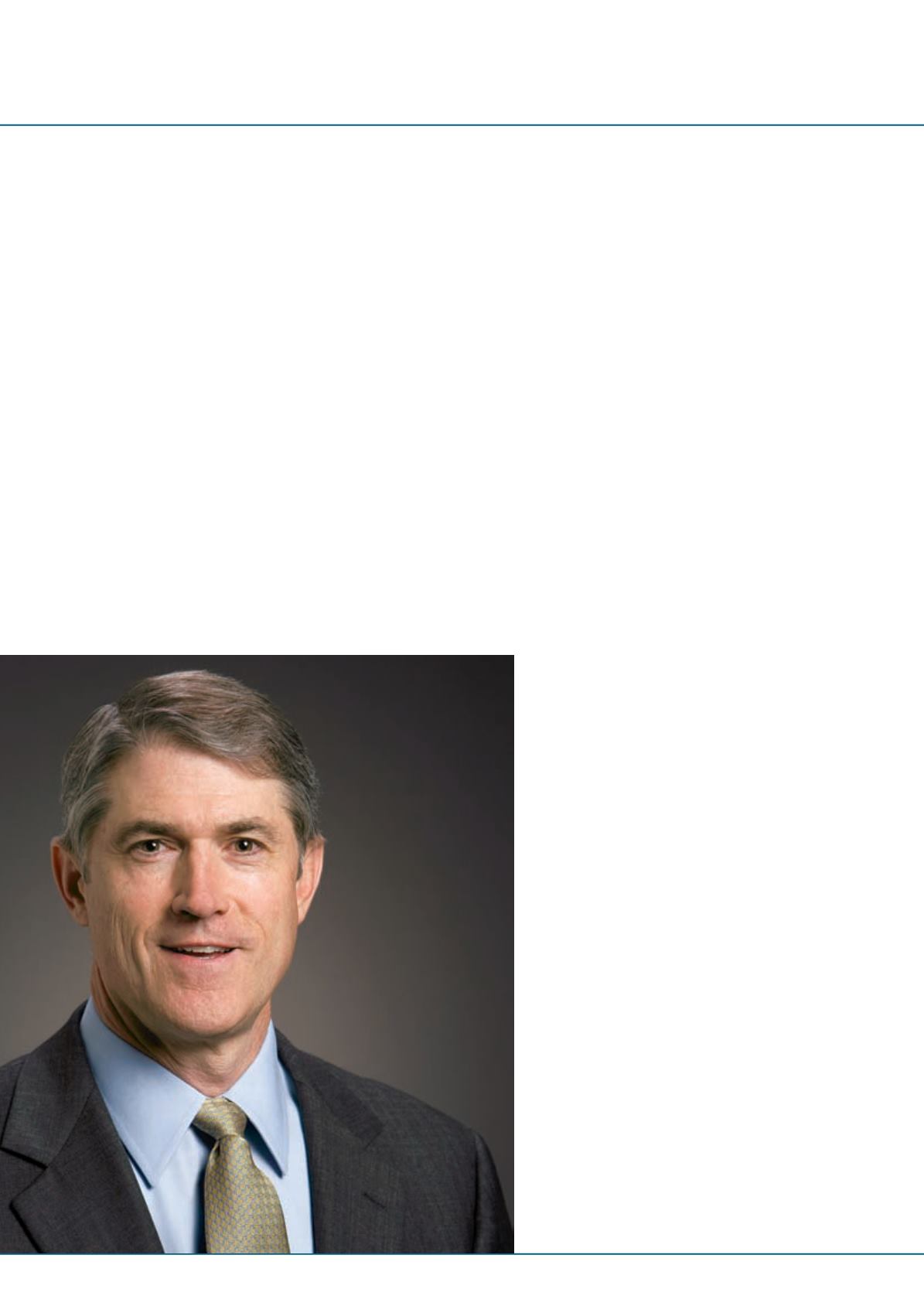
50
Life after Tier 4 Final
INTERVIEW
international
construction
april 2014
equipment or value equipment like Caterpillar that drives lower
owning andoperating costs,”MrOberhelman said.
“I think the slowdown in the last two years has really hastened
the time inwhich that customer need for productivity has come
toour businessmodel. I don’t think anyof uswouldhave guessed
10 years ago that in 2013/2014 that we would have seen the
same kind of productivity needs calling on us. But the Chinese
customers need productivity too, and that’s where our business
model is going.”
Mr Rapp said other crucial aspects to Caterpillar’s success
in China have been its supplier integration and use of locally-
sourced parts. “That puts us in a very competitive cost position,”
he said. “We’vecontinued to launchproducts targetedat customer
economics andhow theymakemoney.TheGC lineupofproduct
is an example – the 950GCwheeled loader and 312GC, 320GC
excavators arehittinghighvolumemarket segments inChina that
weweren’t addressing.
“As the industry in late 2012 and 2013 declined in China, an
areawhere our businessmodel just excelledhas been an ability to
understandhow youfinance equipment. A lot of our local China
competitors put stuff out on financing, or perhaps didn’t have
the same discipline about down payments and management of
receivables,” he added.
Dual-brand strategy
However, a complicating factor is Caterpillar’s wholly-owned
subsidiarySEM, aChineseconstructionequipmentmanufacturer
which also sells its products inChina. But both executives denied
that therewas any conflictwithin this dual-brand strategy.
Mr Rapp said SEM produced equipment for customers where
the initial purchase cost was key – what he called the utility
segment. “If you look at SEM, the utility customer in China
would like productivity, uptime dealer support and all the other
things, but he just doesn’twant topay for it.
“And that pure price play, that’s where we go to market with
the SEM brand. Our hypothesis all along has been that, as the
economy continues to develop and grow, more of that customer
base will migrate up tomachines focussed on lifecycle value and
performance. It’s one of the thingswe’re starting to see.”
Mr Rapp said Caterpillar hadn’t yet seen consolidation of
manufacturers in China, but it had started to see consolidation
within the customer base.
“As they went through the significant downturn, it’s just a
natural that you’d start to see certain smaller customers go out
of business, consolidated into large customers. And as those
customers grow, theybecomemore sophisticated in terms of how
theymake money. And in our business, youmake money when
themachine is up and running.”
Future growth
Looking ahead to the rest of 2014 and beyond,MrOberhelman
seemed confident in growth prospects for Caterpillar. He
said the manufacturer was constantly eyeing new acquisition
opportunities, butwas also self-assured about its ability to expand
fromwithin.
“AnyM&A activity we have will be around the edges – every
day we have 10 or 20 things that we’re looking at, but all very
small. We don’t have anything big out there right now that we
could go after.
“I see great organic growthopportunities in the structure of the
business aswe have it – that’s going todrive a lot of volume. And
thenwemay find some small bolt-on acquisitions that wewould
do from time to time, aswe have done in the past.”
iC
drive common best practice across our global dealer network to
raise that level of performance, because rental is here to stay.”
Mr Oberhelman agreed, and highlighted the fact that every
single one of the company’s 180dealers has a rental fleet.
“What we need to do and work on is howwe go to the rental
market with our dealers, particularly for customers that cross
territories, so they get the same look and feel.
“We are the biggest rental equipment supplier in the world
today when we aggregate all of our dealers, so we should be the
ones that reallyget thebenefit of that.But it is bothgood andbad
forus– thepressure that [rental]putson thecollectivedealers and
us financially iswhy I say that.
“As our contractors/customers push the asset up to us, itmoves
the financial pressure from the customer to the dealer, and then
ultimately to us. We’ve had good luck with that so far, but we
ought to be in a position to take advantage of that because we’re
the biggest player in the industry.”
China
Caterpillar has also become one of the biggest construction
equipment players inChina in recent years, and in fact claims to
hold the largestmarket share in thecountry formid-to-large-sized
excavators.Mr Rapp andMrOberhelman said themanufacturer
had seen rapid changes in demand in this market in the last
few years.
“I can remember 10 years ago, 12 years ago when we started
on this fairly aggressive expansion of our footprint inChina, one
of the great debates was always one between low-end, low-cost
Group president responsible
for construction industries
and growthmarkets, Ed
Rapp: “As smaller Chinese
customers grow, they
becomemore sophisticated
in terms of how theymake
money. And in our business,
youmakemoneywhen the
machine is up and running.”


